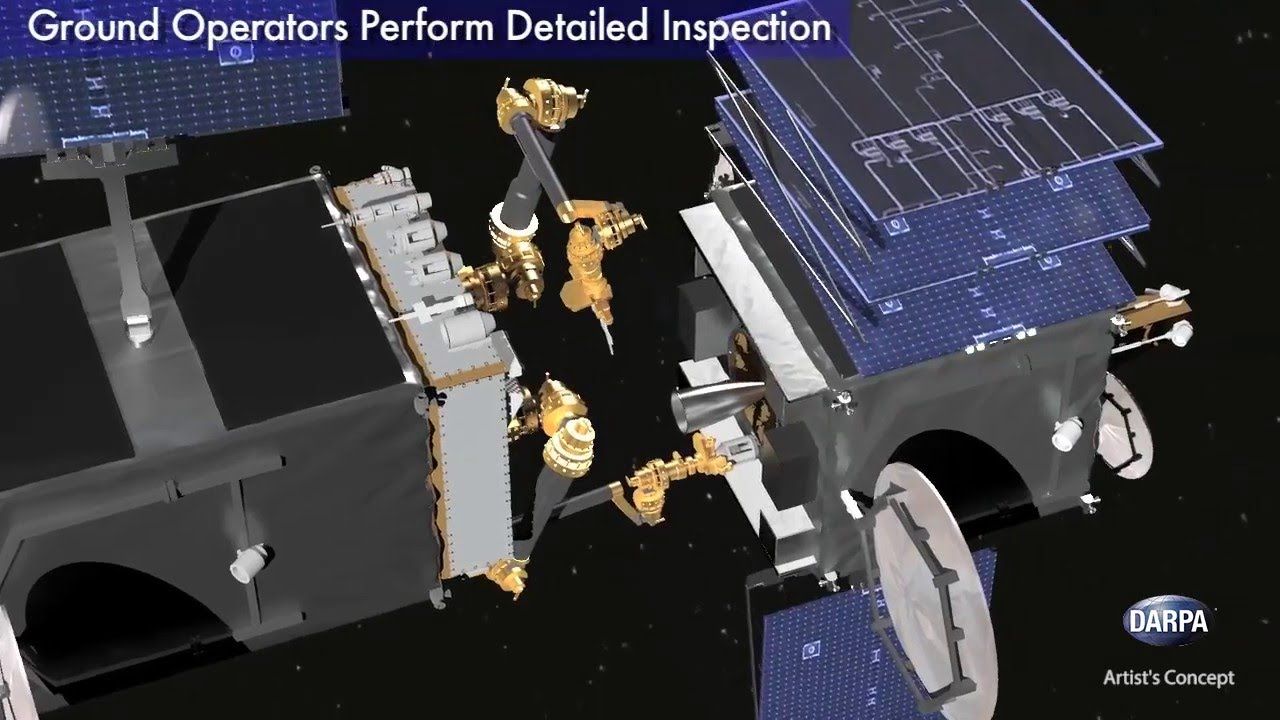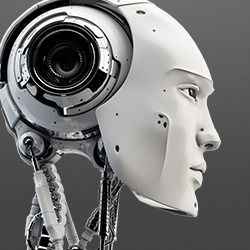Archive for the ‘robotics/AI’ category: Page 741
Mar 29, 2016
Could nanobots make your electronics last FOREVER?
Posted by Karen Hurst in categories: bioengineering, nanotechnology, robotics/AI, wearables
Nanoengineers at the University of California San Diego have developed tiny molecular robots (pictured) that could help to extend the life of delicate circuits and wearable technology.
Mar 29, 2016
This Wonderful Short About a Robot War Deserves to Be a Full-Length Film
Posted by Sean Brazell in categories: entertainment, robotics/AI
Back in 2014, we told you about Rise, a film about a robot insurgency that was the subject of a Kickstarter campaign. The result of the $38,000 raised is this proof of concept video, which definitely looks good enough to deserve a full feature.
Rise comes from director David Karlak and writers Marcus Dunstan and Patrick Melton (Feast). It’s one of those classic robot revolution stories. Of course, in this case you find yourself in the awkward position of rooting for the failure of humans, but that’s sometimes how these things shake out. Plus, it’s always easier to side with Anton Yelchin than Rufus Sewell.
This is clearly a pitch for some studio to give them money to make a full thing, and it’s one of the most successful of that genre I’ve ever seen. There’s clearly a story in mind and Karlak’s vision looks great in these five minutes.
Continue reading “This Wonderful Short About a Robot War Deserves to Be a Full-Length Film” »
Mar 29, 2016
Will capitalism survive the robot revolution?
Posted by Zoltan Istvan in categories: economics, employment, finance, robotics/AI
My new article for TechCrunch on capitalism and the robot revolution:
Economic experts are trying to figure out a question that just two decades ago seemed ridiculous: If 90 percent of human jobs are replaced by robots in the next 50 years — something now considered plausible — is capitalism still the ideal economic system to champion? No one is certain about the answer, but the question is making everyone nervous — and forcing people to dig deep inside themselves to discover the kind of future they want.
After America beat Russia in the Cold War, most of the world generally considered capitalism to be the hands-down best system on which to base economies and democracies. For decades, few doubted capitalism’s merit, which was made stronger by thriving globalization and a skyrocketing world net worth. In 1989 — when the Berlin Wall fell — the world had only 198 billionaires. Now, according to Forbes, there are 1,826 of them in 2016.
Continue reading “Will capitalism survive the robot revolution?” »
Mar 29, 2016
Magic Microbes: The Navy’s Next Defense?
Posted by Klaus Baldauf in categories: bioengineering, biotech/medical, computing, materials, nanotechnology, neuroscience, robotics/AI

Synthetic biology involves creating or re-engineering microbes or other organisms to perform specific tasks, like fighting obesity, monitoring chemical threats or creating biofuels. Essentially, biologists program single-celled organisms like bacteria and yeast much the same way one would program and control a robot.
But 10 years ago, it was extremely challenging to take a DNA sequence designed on a computer and turn it into a polymer that could implement its task in a specific host, say a mouse or human cell. Now, thanks to a multitude of innovations across computing, engineering, biology and other fields, researchers can type out any DNA sequence they want, email it to a synthesis company, and receive their completed DNA construct in a week. You can build entire chromosomes and entire genomes of bacteria in this way.
Continue reading “Magic Microbes: The Navy’s Next Defense?” »
Mar 29, 2016
Neuromorphic supercomputer has 16 million neurons
Posted by Klaus Baldauf in categories: information science, neuroscience, robotics/AI, supercomputing
Today, Lawrence Livermore National Lab (LLNL) and IBM announced the development of a new Scale-up Synaptic Supercomputer (NS16e) that highly integrates 16 TrueNorth Chips in a 4×4 array to deliver 16 million neurons and 256 million synapses. LLNL will also receive an end-to-end software ecosystem that consists of a simulator; a programming language; an integrated programming environment; a library of algorithms as well as applications; firmware; tools for composing neural networks for deep learning; a teaching curriculum; and cloud enablement.
The $1 million computer has 16 IBM microprocessors designed to mimic the way the brain works.
IBM says it will be five to seven years before TrueNorth sees widespread commercial use, but the Lawrence Livermore test is a big step in that direction.
Continue reading “Neuromorphic supercomputer has 16 million neurons” »
Mar 28, 2016
DARPA Announces Next Grand Challenge — Spectrum Collaboration Challenge
Posted by Karen Hurst in categories: information science, internet, military, mobile phones, robotics/AI
DARPA’s new “Spectrum Collaboration Challenge” with a $2million prize for who can motivate a machine learning approach to dynamically sharing the RF Spectrum.
WASHINGTON, March 28, 2016 /PRNewswire-iReach/ — On March 23rd, 2016 DARPA announced its next Grand Challenge at the International Wireless Conference Expo in Las Vegas, Nevada. Program Manager, Paul Tilghman of DARPA’s Microsystems Technology Office (MTO), made the announcement to industry leaders following the conferences Dynamic Spectrum Sharing Summit. The challenge will motivate a machine learning approach to dynamically sharing the RF Spectrum and has been named the “Spectrum Collaboration Challenge.” A top prize of $2million dollars has been announced.
While mostly transparent to the typical cell phone or Wi-Fi user, the problem of spectrum congestion has been a long standing issue for both the commercial sector and Department of Defense. The insatiable appetite for wireless connectivity over the last 30 years has grown at such a hurried pace that within the RF community the term spectrum scarcity has been coined. RF bandwidth, the number of frequencies available to communicate information over, is a relatively fixed resource, and advanced communication systems like LTE and military communications systems consume a lot of it. As spectrum planners prepare for the next big wave of connected devices, dubbed the Internet of Things, they wonder where they will find the spectrum bandwidth they need to support these billions of new devices. Equally challenging, is the military’s desire to connect every soldier on the battlefield, while using these very same frequencies.
Continue reading “DARPA Announces Next Grand Challenge — Spectrum Collaboration Challenge” »
Mar 28, 2016
DARPA Seeking Private Partners for In-Orbit Servicing Program
Posted by Karen Hurst in categories: business, government, robotics/AI, satellites

Looking for partners.
[Via Satellite 03-28-2016] The U.S. Defense Advanced Research Projects Agency (DARPA) is reviving its in-orbit servicing efforts through a new public-private partnership program called Robotic Servicing of Geosynchronous Satellites (RSGS). Under the RSGS vision, the partners would join a DARPA-developed modular toolkit, including hardware and software, to a privately developed spacecraft to create a commercially owned and operated Robotic Servicing Vehicle (RSV). DARPA would contribute the robotics technology, such as the previously developed Front End Robotic Enabling Near-Term Demonstration (FREND) robotic arm, expertise, and a government-provided launch. The commercial partner would contribute the satellite to carry the robotic payload, integration of the payload, and the mission operations center and staff.
Continue reading “DARPA Seeking Private Partners for In-Orbit Servicing Program” »
Mar 28, 2016
Will robots like me? I just entered into the first international beauty contest judged
Posted by Shailesh Prasad in category: robotics/AI
Welcome to Beauty.AI, the first beauty contest judged by an all-robot jury. Robots and humans are welcome to join.
Mar 28, 2016
IBM wants to accelerate AI learning with new processor tech
Posted by Shailesh Prasad in categories: robotics/AI, supercomputing
Deep neural networks (DNNs) can be taught nearly anything, including how to beat us at our own games. The problem is that training AI systems ties up big-ticket supercomputers or data centers for days at a time. Scientists from IBM’s T.J. Watson Research Center think they can cut the horsepower and learning times drastically using “resistive processing units,” theoretical chips that combine CPU and non-volatile memory. Those could accelerate data speeds exponentially, resulting in systems that can do tasks like “natural speech recognition and translation between all world languages,” according to the team.
So why does it take so much computing power and time to teach AI? The problem is that modern neural networks like Google’s DeepMind or IBM Watson must perform billions of tasks in in parallel. That requires numerous CPU memory calls, which quickly adds up over billions of cycles. The researchers debated using new storage tech like resistive RAM that can permanently store data with DRAM-like speeds. However, they eventually came up with the idea for a new type of chip called a resistive processing unit (RPU) that puts large amounts of resistive RAM directly onto a CPU.
















